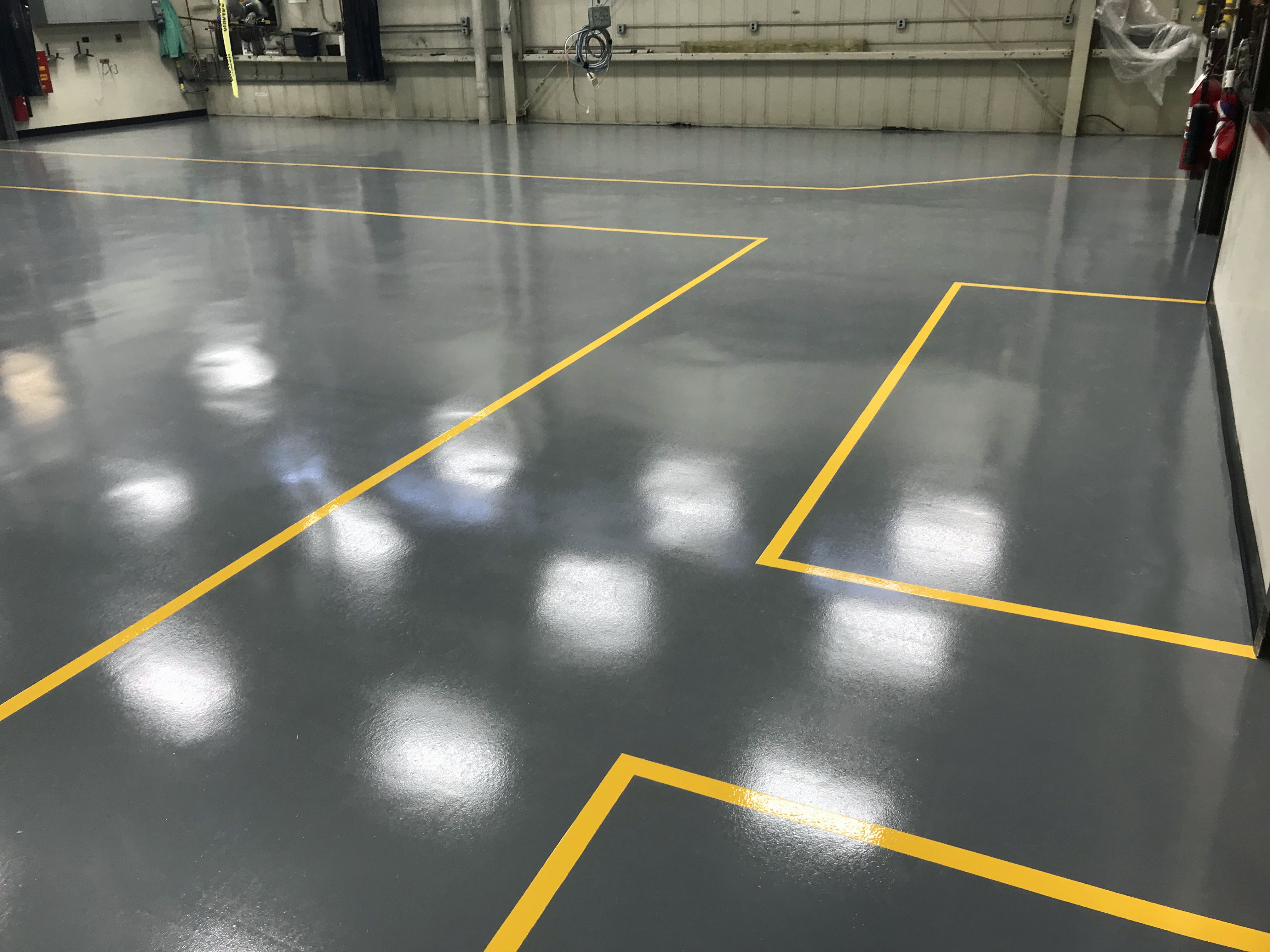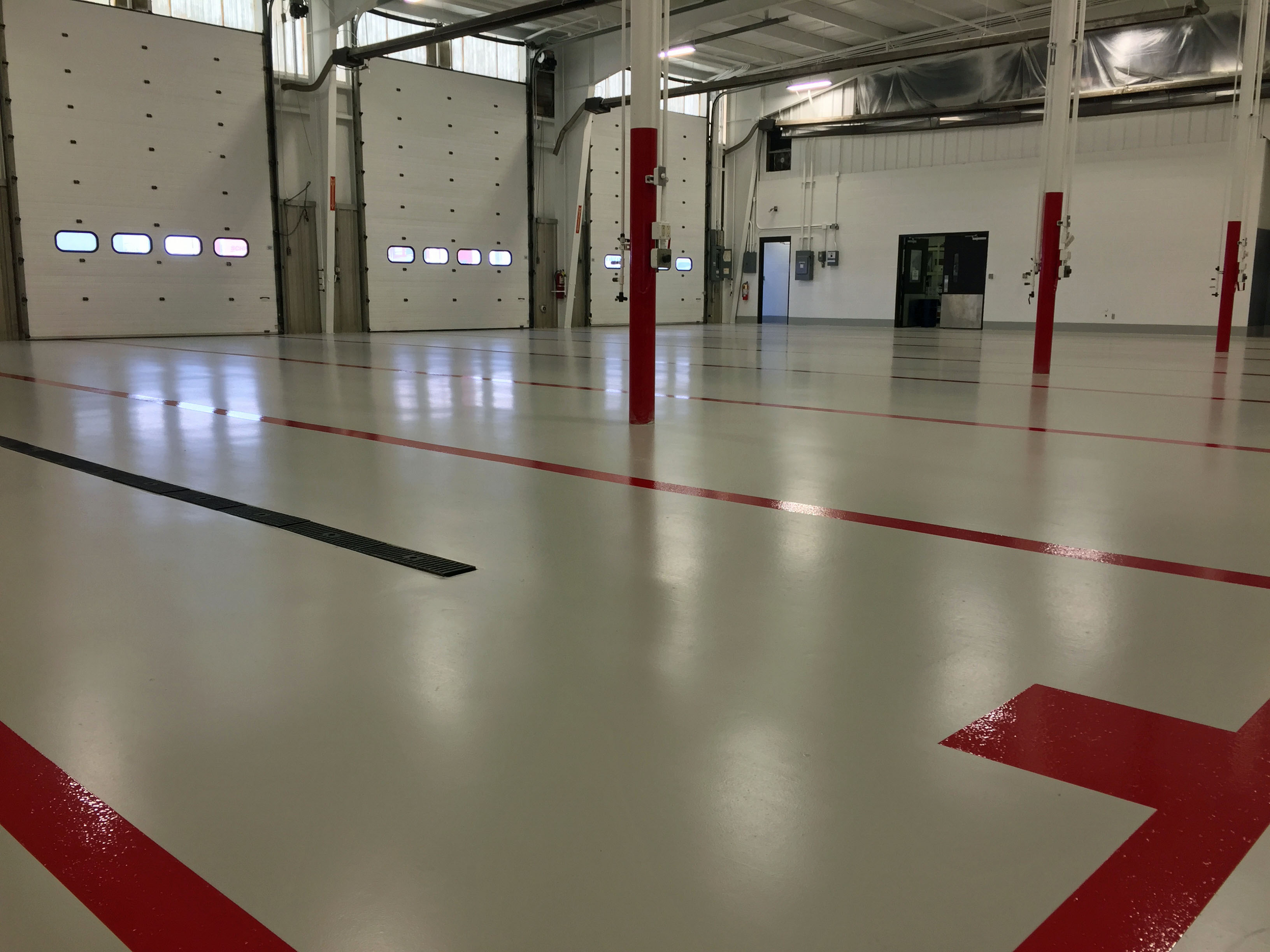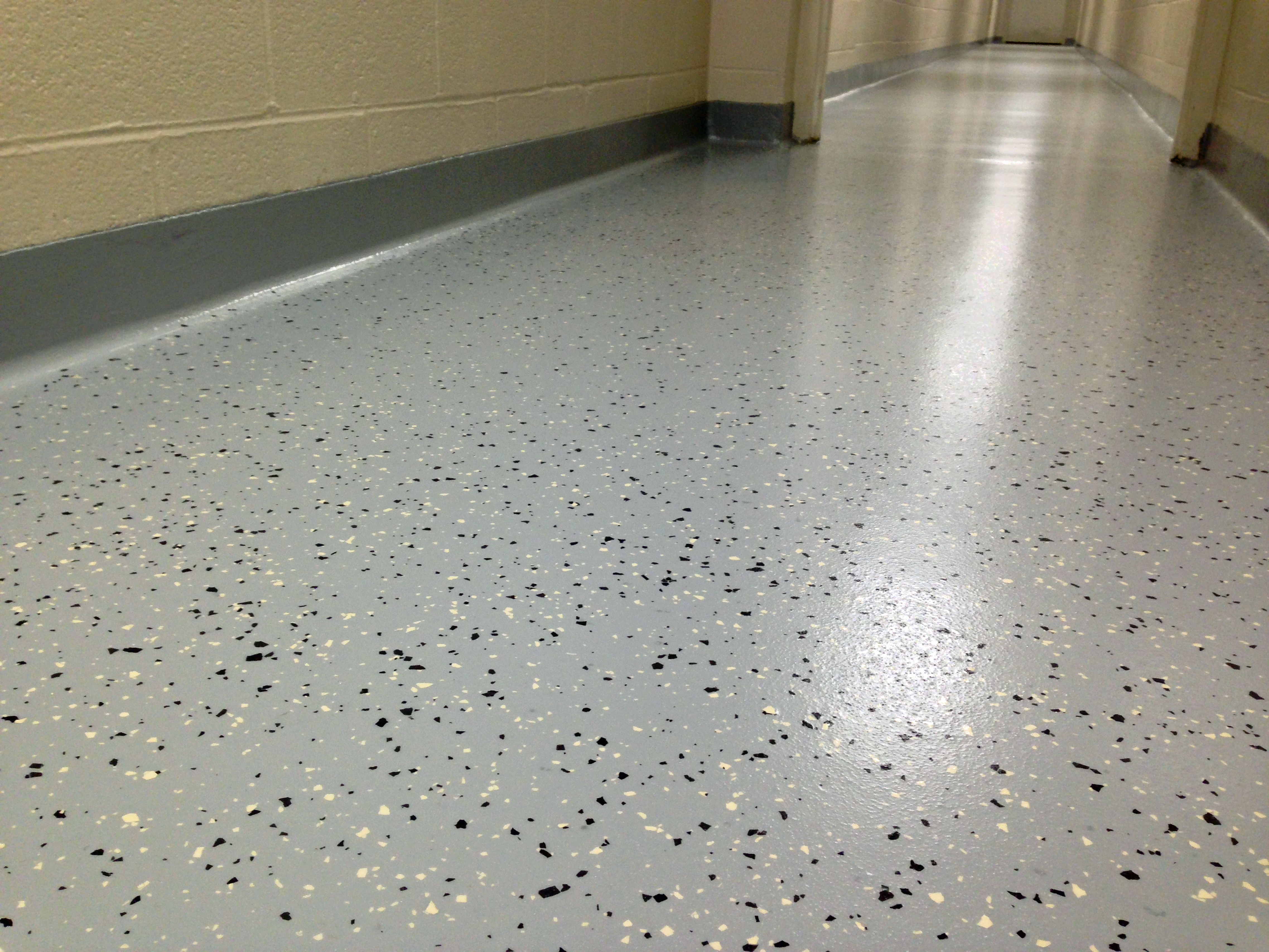Benefits of Epoxy Floor Coatings in Basements, Garages, and Other Concrete Coatings.
Installing Beneficial Epoxy Floors
Installing the correct floor in specific areas can improve the functionality of that room. It wouldn’t make sense to install carpet in a laundry room, or hardwood floors in a garage (although it does happen). These areas are frequently exposed to water, salts, oils, cleaners, and other residues that would destroy carpet and hardwood. So what’s a good flooring solution in these areas?
Resinous floors such as epoxies and urethanes can provide chemical resistance, abrasion resistance, and are easy-to-clean. Epoxy won’t break down against the concentrated cleaners typically stored in a garage or laundry room. And the valuable concrete slab that builds the foundation for your residence will be protected from the heavy tools, appliances and vehicles due to epoxy’s abrasion resistance. And when the unavoidable spill occurs, these resinous, seamless floors are easy to clean.
Which is the Right Resinous Floor Coating?
There are a variety of resinous floor coatings available. And selecting one over the other depends on the purpose of the room. Do you need an easy to clean surface? Do you need to protect the concrete? Do you want something that increases the illumination? Do you want something that adds some color and aesthetics?
Durability isn’t the only feature epoxy and urethane floors offer. They can also be installed with colored micro-chips, presenting a decorative finish. Or, they can be matched to desired colors, to blend in with a theme. These self-leveling options offer glossy color, which can increase the aesthetics and design in any room.
One drawback from epoxies is that they are not color stable. Over time, they develop a yellow tint, discoloring their appearance. This will be more noticeable in lighter colors. Urethanes are more color stable, making them a better option for a top coat. But the drawback with urethanes is that don’t adhere as well as epoxies. The best solution is to use epoxy as a primer, with a urethane top coat. But it all depends on purpose of the floor before factoring in this consideration.
Finding The Right Epoxy Flooring Contractor
The installation process does have its challenges, and might be too advanced for a DIY installation. Inconsistent preparation could create weak points in the floor, causing delamination. And inadequate preparation will not offer the epoxy enough profile to bite into the substrate. And a poor surface profile is vulnerable to adhesion failure. Silicosis has been a hot topic with OSHA, and a do it yourselfer may not have the proper equipment to control or mitigate the dust cause by grinding concrete.
But challenges occur beyond the floor preparation. Epoxies and urethanes are 2 component products, meaning they need a catalyst to activate their hardening reactions. But these 2 component products must be mixed properly, otherwise they will never cure or harden, leaving wet material on the floor. So it’s critical that the installer know the proper mix ratios for each product being installed. Some do it yourselfers are up for the challenge. But most home-owners can avoid these challenges by finding an experienced epoxy flooring contractor. This will ensure that the floor is adequately prepared with diamond grinders, and that the dual-component material is mixed properly.
Floor Preparation
A concrete floor needs to be ground with diamond blades. These diamond blades are impregnated with diamonds, which means it’s strong enough to create micro-scratches into the substrate. These scratches create the ideal surface profile, which allows the epoxy to adhere properly. If epoxy is not adhered properly, it is more likely to peel off the surface. Or delaminate when tools or equipment are dropped on it.
Grinding concrete can create a significant amount of dust. When interviewing contractors, a good topic to discuss is dust control. How will they mitigate dust? How will they prevent dust from entering my home? Diamond grinders should be shrouded to accept vacuum hoses. For most garages, or small rooms, a ShopVac is typically adequate. But when the areas become larger, a more industrial vacuum set up will be required.
It’s also a good idea to ask the contractor to hang plastic over the doorways leading into the home. This will add an extra barrier to prevent concrete dust from entering into the home.
But one commonly overlooked preparation area are the floor joints. Control joints are installed in new slabs to help guide the cracking that may occur when the new slab settles. These floor joints can prevent a seamless floor. So the epoxy flooring contractor and customer will need to discuss whether those joints should be cut and pre-patched before installing the floor. Or, if the joints should be exposed, and cut and filled after the floor installation.
The decision will be determined by the final appearance of the floor, and the age of the slab. These are details that ultimately need to be determined by the property owner and epoxy floor installer.
Epoxy Floor Installation
Installing the actual epoxy floor isn’t as challenging as preparing the floor. However, it does require astute observations and attention to detail. Learning the mix ratio for your dual component epoxy or urethane is critical, because if improperly mixed, it may not cure, and can cause a bigger mess to clean up.
And installing the resinous floor shouldn’t be considered a 1-man job. First, you’ll need a separate individual mixing the material, then you’ll need another person (or persons) pouring, squeegeeing and back-rolling the material. Trying to attempt all of these steps with 1 person will create an inconsistent appearance, that has an increased likeliness of getting nap and roller marks in the finish.
Additional Features to Combat Cold and Wet Environments
Depending on where you live, your floors can offer different features that can accommodate each different area. If located in northern areas, where the floor is frequently exposed to snow and ice, it’s worth adding some texture to the floor. This will require a layer of broadcast silica to be thrown in the top coat. This layer of silica will then require an additional top coat of epoxy or urethane to seal in the silica.
Or, a troweled in margin cove could be a nice addition to prevent running water from breaching adjacent rooms. These coves are installed along the base of the wall, creating a seamless floors, that prevents moisture from leeching underneath the wall, causing damage behind the wall.
In Conclusion
Epoxy and urethane floors can offer a great benefit in the right environment. Their chemical resistance can protect the subfloor, while adding some decoration to what would normally be a bland slab of concrete. And although their installation can be challenging, hiring a skilled and professional epoxy flooring contractor will offer great value, knowing that your floor has been installed correctly.
GUEST POST FROM OUR FRIENDS AT www.PennCoatinc.com.




